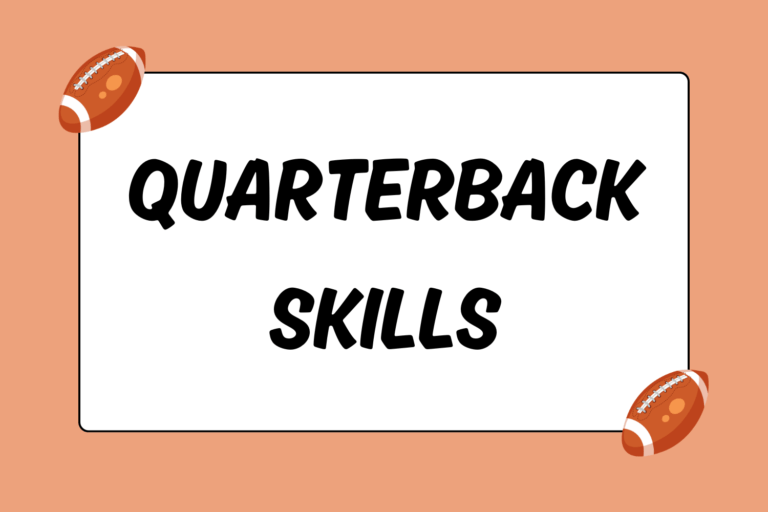For wide receivers and tight ends, no attribute is quite as important as the ability to catch passes. Speed, strength, and dexterity are useful in keeping defenders at bay, but outrunning the other guy doesn’t really matter too much if the ball doesn’t get caught. Here is a breakdown of what it takes to cleanly and regularly catch passes.
Eye on the Prize
One of the simplest and most crucial steps in catching a pass is keeping your eye on the ball. There’s probably going to be a lot going on around you as you get into the catching process, and the human eye is naturally attracted to movement. Training yourself to watch the ball all the way into your hands is a good habit to develop, especially for young players. The sooner it becomes a habit, the easier it will be to catch all sorts of passes.
Of course, you won’t be able to watch the ball from the very start of the play. The first few seconds will be used to gauge the defense’s coverage, and to plot out the specific path of your route. Though there’s a lot happening on the ground around you, the ball should be the only thing flying through the air. Locating the ball is the top priority after you establish the route; the amount of time you have to locate the ball directly depends on the depth of the route, so make sure you don’t let too much time elapse before making eye contact with the ball.
One of the most common mistakes made by receivers that results in dropped passes is that they take their eyes off the ball a split second before it’s caught, either to locate a defender or to figure out where they want to run. In that split second without seeing the ball, the receiver’s mind misjudges where it will land and essentially tells the hands to go to the wrong place. Watching the ball all the way is crucial to making the catch.
Getting in Position
Unless you’re literally just playing catch in the backyard, chances are good you’ll be moving around a lot immediately prior to attempting to catch a pass. Movement is good, and will help you stay away from defenders, though it’s important to put your body in a catch-friendly position. Good positioning doesn’t just open your body to the ball; it also makes it easier to keep your eye on it.
Achieving good body positioning happens from the waist up. Everything from there down should focus on running the correct path. Here are the steps for getting your body into position to catch a pass:
Step 1: Align the Core
Slightly rotate your upper body at the waist in the direction of the ball. The actual rotation at the waist will be very slight, as you want to keep your hips aligned to the path of your route.
Step 2: Open the Shoulders
Rotate your shoulders in the same direction, but much more so. Ideally your shoulders should rotate so the ball is coming straight at your body (rather than at an angle), but this is difficult to achieve when running certain routes.
Step 3: Get the Hands Ready
Raise both arms up. Palms of the hands outward and pointed right at the ball, with your fingers pointed to the sky.
The key to good positioning is being able to time the maneuver properly:
- Get into position too early and you’ll broadcast where the pass is going to nearby defenders, making it much easier for them to break up the pass
- Get into position too late and the chances you’ll get the ball into your hands are severely reduced.
Depending on the distance of the pass, receivers should position themselves to catch the ball just about one full second before they make contact with the ball. It’s a very small window of time, but with practice it should be enough to rotate yourself towards the ball without giving too much away to the defense.
Making the Catch
You’ve watched the ball fly and put yourself in a catchable position. Now it’s time to make the prep work pay off and bring the ball home. The key to making the actual catch is hand positioning; both the formation/shape of the hands, and where you position them in relation to the ball.
- Hand Formation: If your arms are in the right position, then your hands will already be halfway in the proper formation—palms out at the ball, fingers pointed up. From here, your hands should morph into a collapsible mitt of sorts. The thumbs and forefingers of both hands should join together; if you hold your hands up in front of your face like this, they should make a spade shape, similar to the spades card suit. The other fingers should be spread out a bit, but not stretched to their respective limits.
- Hand Positioning: Ideally, your hands should stay between the ball and your body when attempting a catch. However, chances are good that not every pass will be thrown so the ball comes right at your body. Regardless of the ball’s location, your hands should be positioned so the front point of the ball will fly into the spade-shaped hole made when your hands are in the proper formation.
Although you might want to catch the ball by trying to trap it between your hands/arms and upper body, avoid this instinct as much as possible. Yes, your upper body is a bigger target than both your hands put together, but it’s much harder to control the ball after it hits your chest and/or shoulder pads. Though the ball can be caught in this manner, more likely it will bounce away. Stick with the hand catch; you may not grab every ball that comes your way, but an incomplete hand catch pass is better than a bounce off the shoulder pads that gets intercepted.
Once your hands are in the right formation and positioned in front of the ball, it’s time to make the catch. This is where the ‘collapsible mitt’ part comes into play:
- The hands start flat, in the proper formation and position.
- When the ball makes contact with your hands, the first spot it should hit is that spade-shaped hole.
- After this happens, your hands will naturally fold inward and collapse on the ball.
Depending on how hard the ball is thrown, the strength/tension in the hands will need to be adjusted accordingly. A soft five yard toss will bounce off your hands if they’re really firm, but a 30-yard bullet will go right through your hands if they’re too soft.
Hot Tip: Positioning Options
If the pass is coming above the waist, your hands should stay in the normal formation and position. However, if a ball is thrown low, then a different hand formation and position is required to make a catch.
For these passes, the hands should be rotated so the palms are facing up and the pinkies are touching together. This creates a basket instead of a mitt, and makes it easier to possess and control a low-thrown ball.
Practice Makes Perfect
No player in the history of the game has caught every pass ever thrown to them. Still, the more these habits become part of your natural instincts, the easier it will be to make all kinds of catches. Practice these parts individually when you have time, and you’ll quickly see an increase in your pass-catching abilities.





